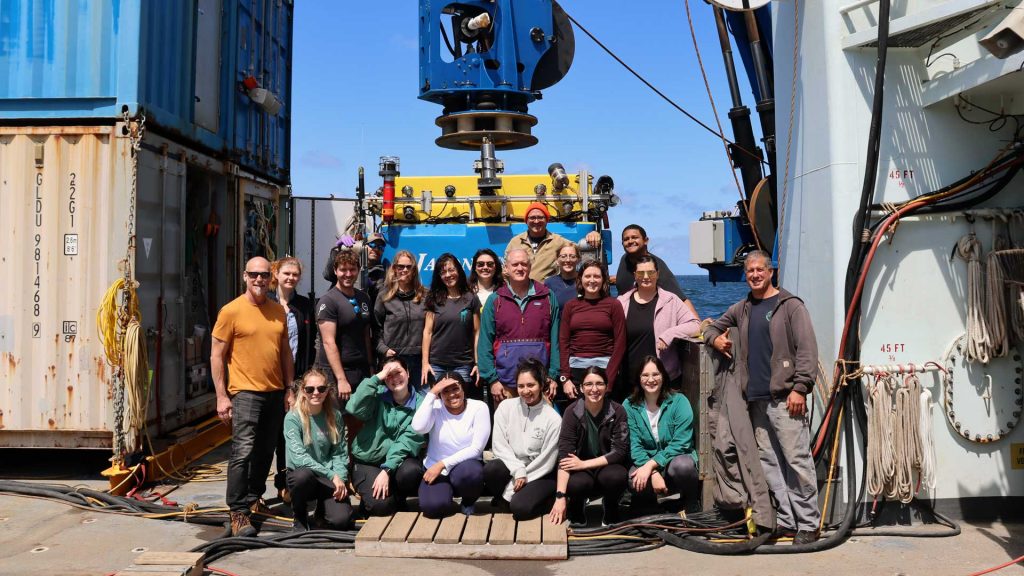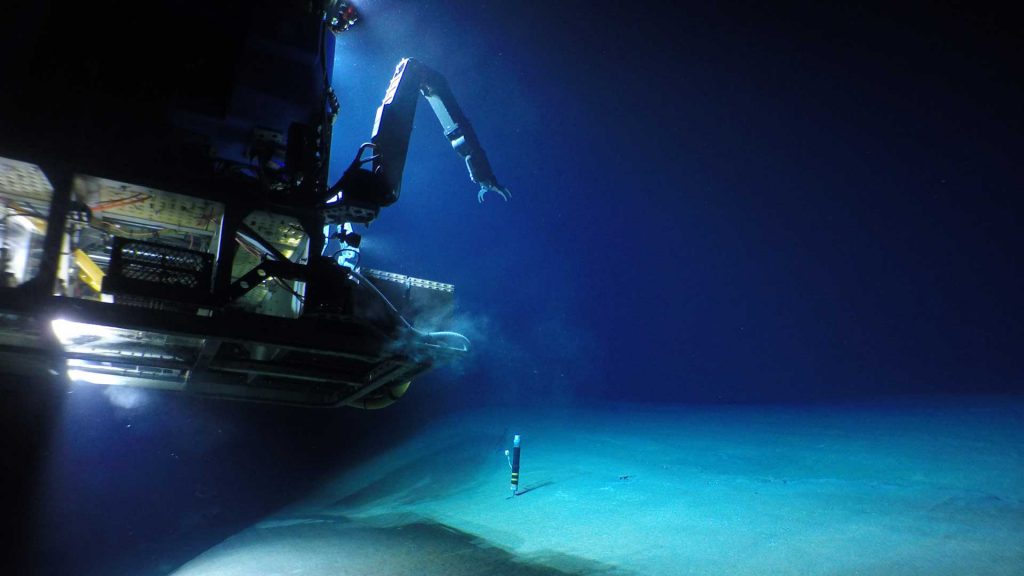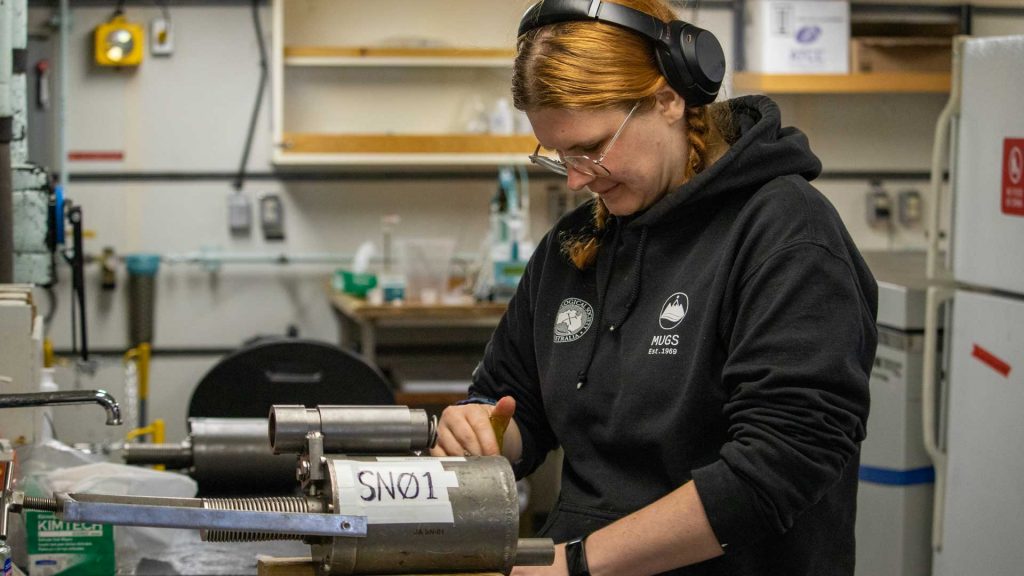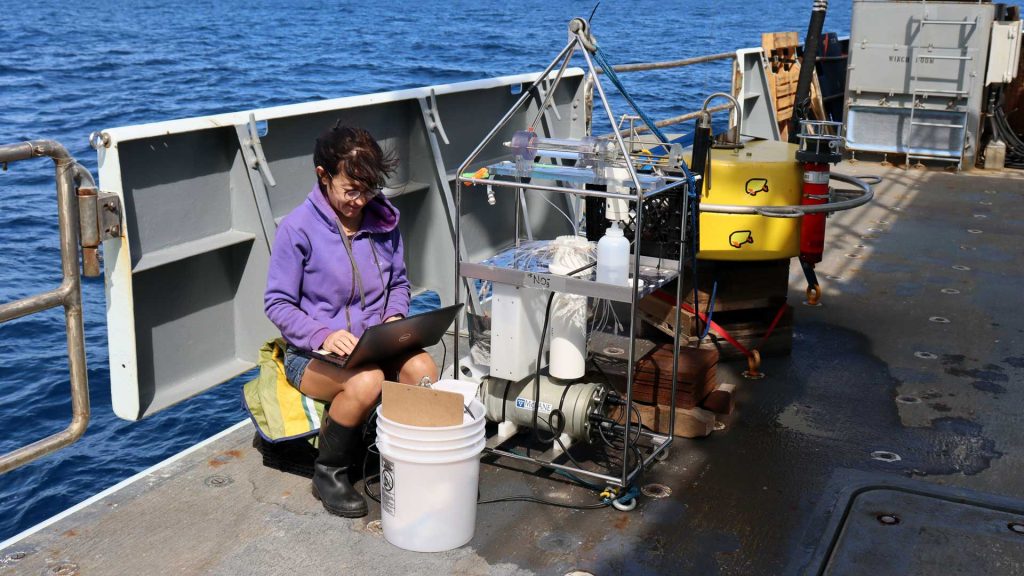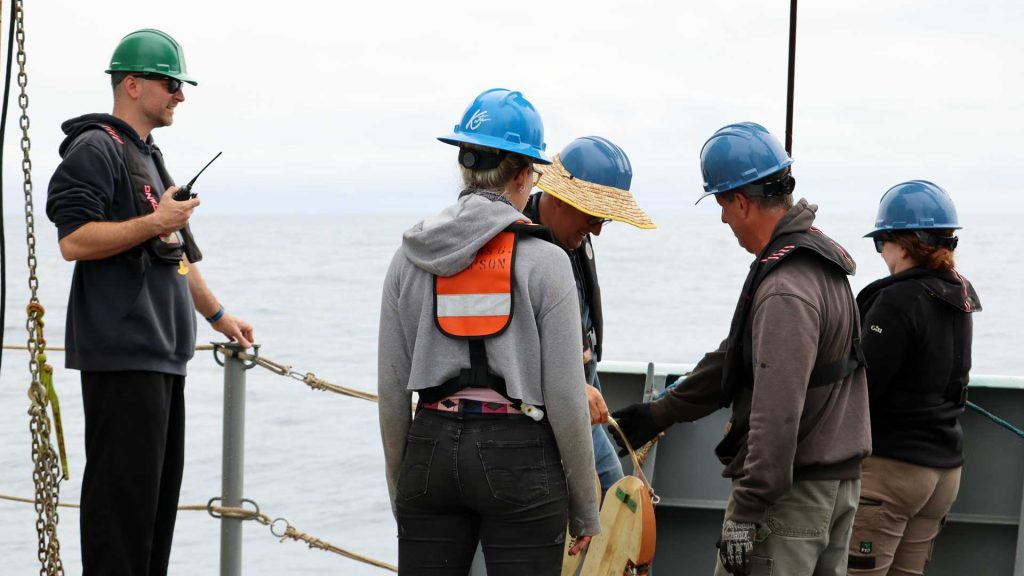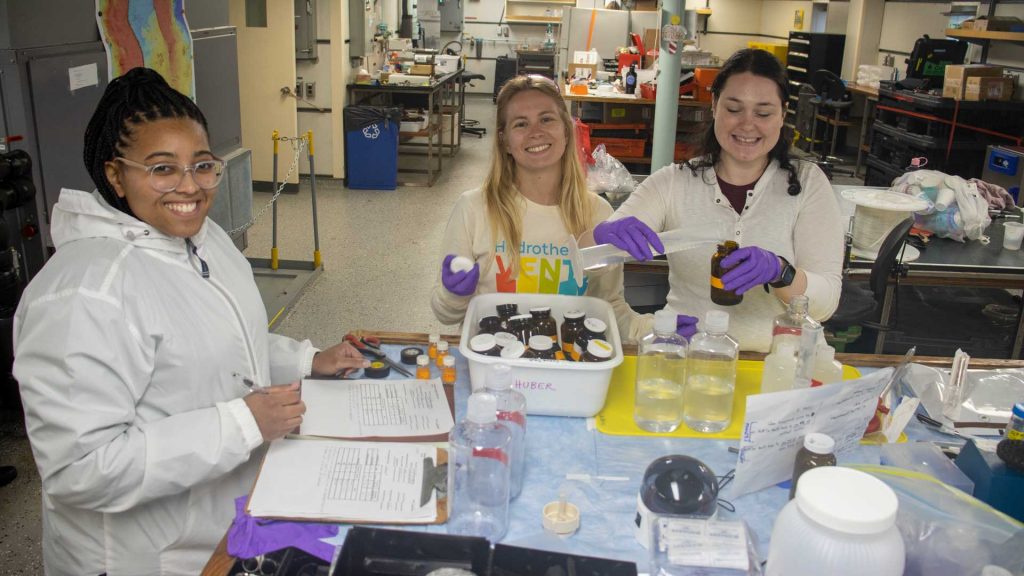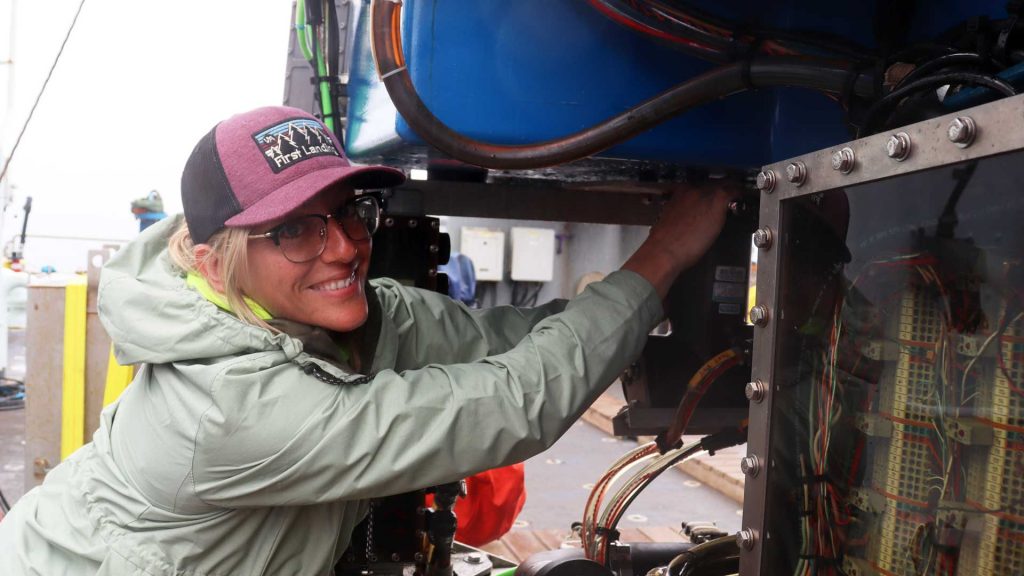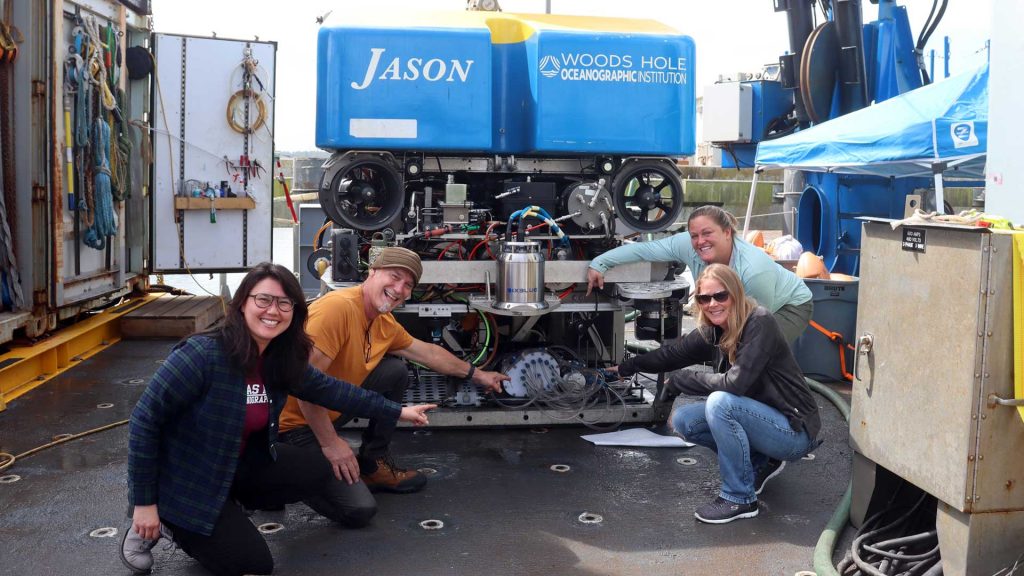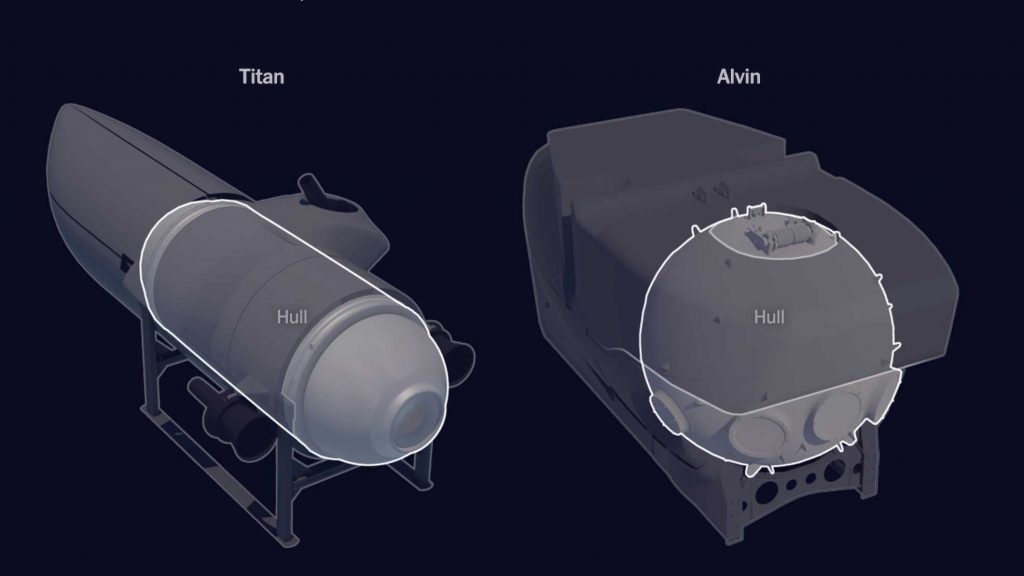Archive for July 2023
Mission accomplished!
The PROTATAX23 Science Team and members of the Jason Team on deck of R/V Thomas Thompson. (Photo by Thompson AB Elena Wisecarver, ©Woods Hole Oceanographic Institution) The numbers and teamwork that made PROTATAX23 a success The dives are over, samples are stowed in freezers, Jason is strapped to the deck, and R/V Thomas Thompson…
Read MoreVolcanos, vents, and creatures of the deep, oh my (Part 2)
Jason uses an isobaric gas-tight (IGT) sampler to collect fluids flowing from a hydrothermal vent in the Pacific that supplies chemicals supporting lush, vibrant ecosystems. (hoto courtesy of Stefan Sievert, WHOI/NSF/ROV Jason, 2014) The ROV Jason Teams’s most memorable dives The Jason Team knows regions of the ocean floor like other people might know…
Read MoreVolcanos, vents, and creatures of the deep, oh my (Part 1)
In 2015, Jason explored the inside of the Havre volcano on the seafloor near New Zealand. (Photo courtesy of Dan Fornari and S. Adam Soule, WHOI, and Rebecca Carey, Univ. of Tasmania/NSF/WHOI-MISO) The ROV Jason Teams’s most memorable dives The Jason Team knows regions of the ocean floor like other people might know paths…
Read MoreDeep-sea access is more important than ever
NASA Jet Propulsion Laboratory Postdoctoral Fellow Bonnie Teece working with a major water sampler after a Jason dive. These samplers, invented after the discovery of hydrothermal vents, are capable of sampling vent fluid are places where water temperatures in exceed 400°C. (Photo by Hannah Piecuch, © Woods Hole Oceanographic Institution) Q&A with NASA Jet Propulsion…
Read MoreOur eyes and hands on the seafloor
WHOI Associate Scientist Maria Pachiadaki with her instrument miniSID, which can perform experiments at hydrothermal vents while on the seafloor. (Photo by Hannah Piecuch ©Woods Hole Oceanographic Institution) Q&A with WHOI marine microbiologist Maria Pachiadaki on sampling the deep ocean with Jason WHOI Associate Scientist Maria Pachiadaki studies the deep ocean, focusing on zones…
Read MoreThe team is everything
Jason Expedition Leader Chris Judge (left) acting as deck boss for a Jason deployment. Also pictured (left to right): R/V Thompson AB Kate Varberg and Jason Team members Hugh Poponoe, Akel Kevis-Sterling, and Antonella Wilby. (Photo by Hannah Piecuch, ©Woods Hole Oceanographic Institution) An interview with Jason Expedition Leader Chris Judge Chris Judge is…
Read MoreThe possibilities are endless
ROV Jason first impressions with early career scientists (Left to right): Texas A&M graduate student Kayla Nedd, WHOI Guest student and Scripps Institution of Oceanography postdoc Emilie Skoog, and Texas A&M graduate student Alexis Adams processing fluid samples just procured in the deep ocean. (Photo by Hannah Piecuch ©Woods Hole Oceanographic Institution) Touching down When…
Read MoreThe coolest job in the world
Jason Team MATE Intern Sarah Sergent preps ROV Jason for a dive to the hydrothermal vents at Axial Seamount during PROTOTAX23. (Photo by Hannah Piecuch, ©Woods Hole Oceanographic Institution) Sarah Sergent is a MATE intern at sea with the Jason Group during PROTOTAX23. She is a new graduate of the Marine Technology Program at Northwest…
Read MoreLife and dinner among the microbes
The science party on PROTATAX23 with the SUPR Sampler installed on the remotely operated vehicle Jason. Left to right: Texas A&M professor Sarah Hu, MBL scientist Joe Vallino, WHOI Engineer Kaitlyn Tradd, WHOI Scientist Julie Huber. Photo by Hannah Piecuch, ©Woods Hole Oceanographic Institution. Welcome to the PROTATAX23 expedition to Axial Seamount. On board the…
Read MoreThe Maverick Design Choices That May Have Doomed Titan
Submersibles must withstand the deep ocean’s crushing pressures, which squeeze with equal force from all sides. At Titanic’s depth – two and a half miles down – every square inch of a submersible experiences three tons of pressure. A spherical hull distributes the stress evenly, making it the best shape for resisting the compressive forces…
Read More
